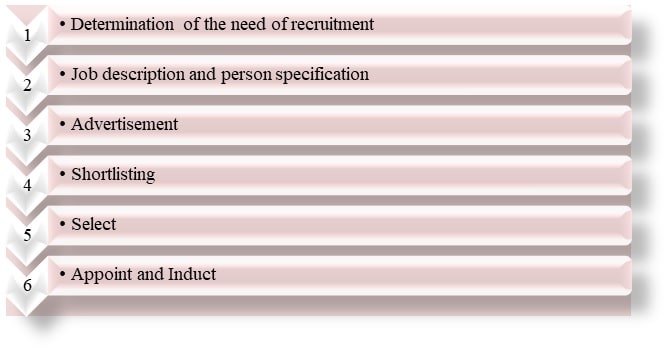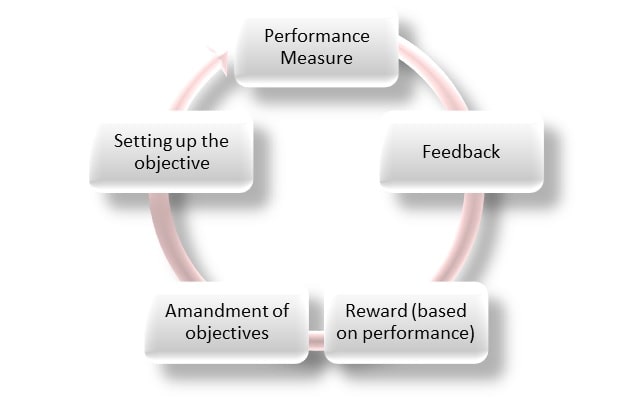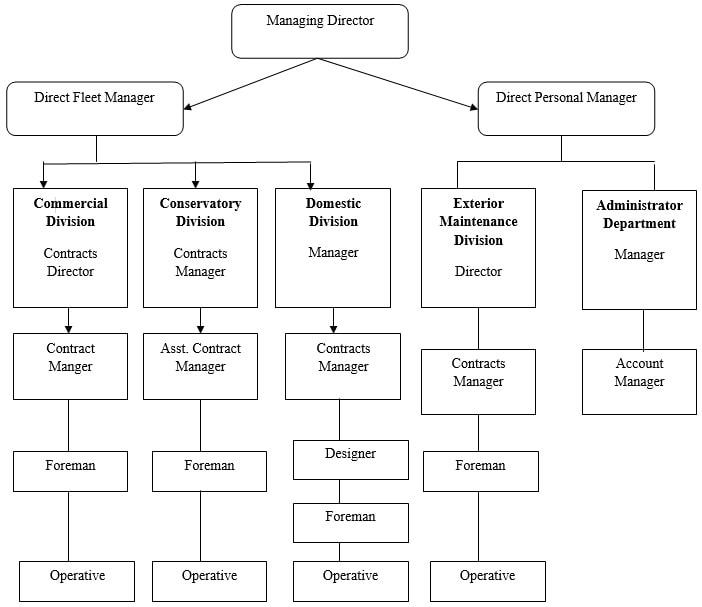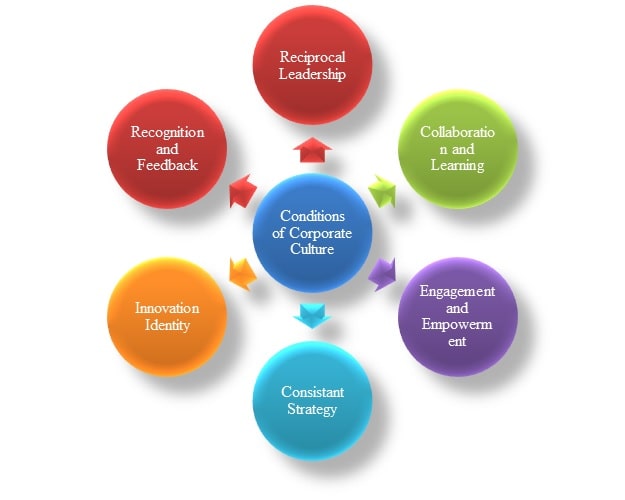HR Sample Assignment
Assignment 1:
1.0 Introduction:
The area of business and management is evolving in a rapid pace. There are several branches of management, closely or loosely related to each other; role of the management employees is almost as same as it may seem to get imitated. By examining and identifying the roles and responsibilities of the contemporary organisations, ideologies of the HR management for all kind of management seem to be almost same in treatment and in intensification. I, the researcher, while going through Monster, an internet job portal and career posting website, has found that Avon Canada Inc. is in search of a sales manager. In the context of this assignment, I am going to narrate all the possible qualities those are badly needed for a sales manager while looking for the first permanent job that actually similar to the qualities that I, in general way, seek for.
1.1 Basic Concepts of Human Resource:
There is no such accepted frame work still has been created for Human Resource Management. Basically, HRM can be mentioned as the managing people on the basis of employer and employee relationship. Integration of the organisational resources and maintaining coordination between the employees are considered to be the basic duty of the HR management of an organisation (Dickmann and Muller-Camen, 2009). At the same time, the HR management is responsible of handling the conditional reinforcements to procure the basic conditionality of the organisation.
Accountability and assessment of the employees in the local and global context centralized planning for the employees to be strategized by the HR management is very much essential. Implementation of different strategies in the workforce for the successful elevation not only for the employees but for the organisation as well has led to a consistent psychological expectation which actually seem to transcend the configurational HR management approach for the strategical decisions (Milkovich, 2010). What is more surprising, HR management seem to be a reasonable tool, rather a contingent approach that actually helps in sterilizing the organisational objectives; a tool for attaining the competitive advantages. With both the internal and the external strategies of HRM, it can consider being the organizational approach for the situational development of an organisation. The centralized and decentralized approach of an organisation basically depends on the different principles taken by the HR management. Therefore, a critical business environment encompasses the realistic need of business management.
2.0 Understanding of Human Resources Processes:
For human resource management, there are some basic duties that are needed to be followed. Maintaining a proper relationship with the employees and providing a safe and motivating environment is consider being the basic duty of HR management. A HR manager is responsible of eliminating all kind discriminations among the employees.
Away from providing safety and security to the employees, Hr management is needed to be very much loyal to the organisation objectives. Therefore, recruiting and selecting appropriate employees seem to be very much necessary (Andolsek and Stebe, 2009). The employees who are being recruited by the HR authority are, from all the avenues, required to be efficient and they are to be motivated to flow with the same wave of the objective of the organisation. Being modern, HR authorities, now a day, appear to be using the internet system for recruitment process. Assessment of the proper candidate is needed to be conducted through interview and selection process. All the shortlisted and selected candidates are let to go through a successful training process which actually enables them for serving the organisation for a prolonged period. In the figure below, the process has been mentioned in a sequential way (Lawler, 2008).

Figure 1: The Process of Recruitment and Selection
(Source: Lengnick-Hall and Moritz, 2009)
3.0 Communication Expresses and Organizing the Ideas and Information:
The HR management is responsible of attaining the systemic behaviour of the employees. In some aspects, it is needless to be mentioned, HR management is the spokesperson of the employees. It has to work as the intermediator between the management and the employees. To maintain the sensitivity of the work culture in the working place, HR managemnt is needed to be very much confident in their approach. mainataining the performance of the employees is callde to be another pertentious responsibility that is to be performed by the HR management of an organisation.

Figure 2: Performance based communiacation
(Source: Becker and Gerhart, 2009)
To make an employee always cheered up and energetic for the work force, a good relation is needed to be retained (Becker and Gerhart, 2009). Motivation and rewading in this scenario seem to play the most obvious factor that helps the employees more devoted for the successful accomplishment of rthe task that has been rendered to him. More to be added, by adapting such type of steps, the corporate value of the employees are also acertained.
4.0 Application of HR tactics in context of the sales manager:
For a sales manager, the basic duty is to control the sales process of an organisation either of the peoduct or services. Therefore, with an immense level of opportunity coveted the accountability. The people working under the guidence of a sales manager are needed to be very much active in their role (Bae and Lawler, 2008).
For a sales manager, keeping cordiality with the subordinates is another efficient quality. In respect of keeping people motivated and energetic, the duty of the sales manager is to catapult the budget. On the other hand, implementation of CRM strategies pipes the additional opportunities to be propelled.
Proposition of the value and the negotiation surely are the illusive and responsive stages that lends forth towards the development. In marinating a proper business, the responsibilities of the sales manager and the sales executive, from all the avenues are indomitable.
Assignmement 2:
1.0 Introduction:
Canadian Tire, being introduced in 1922, controls its retailing operations based on automobile spare part services, apparel designing, sportswear and so forth. IN the present day the company has become one of the biggest automobile services retailing company in Canada. The company has chained more than 500 stores and outlets in Canada itself and is aiming to flourish its market in other countries of the American continent. Apart from those products of Canadian Tire is being sold by the local and the wholesalers as well. Often it is said that if Canadian Tire were not there the progress of Canada might have been stopped.
2.0 Organisational Structure:

Figure 3: Organisational structure of Canadian Tire
(Source: Bratton and Gold, 2010)
IN Canadian Tire, the most signified post seems to be hold by the Managing Director of the company which seems to be responsible of taking all sorts of decisions of marketing. Business related all the processes are mauint5ained and nourished by the MD of the company. To help to MD, there is a board of authority that stand responsible for developing all the business structure and shaping the designation that is going to be build in by the organisation (Bratton and Gold, 2010). There are two subordinates of MD who work in genius and seem to control all the possible subordinates for the sake of the company- Direct Fleet Manager and Direct Personal Manager do hold this post. They seem to be responsible for conducting all sort of authoritative works.
Direct Fleet Manager manipulate the commercial division, conservatory division and the divisions which are generally controlled by contract manager, asst. contract manager and contract manager respectively. For the contract manager, there is necessity for developing the computer graphic and designing of the tires, appeals and other sustenance (Bratton and Gold, 2010). This is because, if not designed properly, the market demand may not be fulfilled properly. On the other hand, under the contract manager, asst. contract manager there are foremen who seem to be in charge of controlling the lower level clerks and workers. These people seem to play the most preparative and inductive role for the manufacturing the products; and these people are called as the wheels of Canadian Tier. These people in the organisation are called as the operative persons.
In a different scenario, Direct Personal Manager seems to control two intrinsic groups of people: Exterior Maintenance Division and the Administrative Department. The exterior section of Canadian Tier seems to operate the market place. All the sales personals do belong to this group. A director seems to maintain this group (Banfield and Kay, 2012). Assessment of the market place, surveying the demand of the customers is the basic duties of this group of employees. Contract managers seem to work underneath the director of exterior maintenance division. Besides, the administrator department is supervised by a manager. Accounts department seems to work under the Administrative Department. Accounts department is handled by a account manager and the subordinates.
The tree alike organisational structure of Canadian Tier seems to be very much indignant in their approach. Moreover, the benefits and the market resistance of the organisation seem to be controlled by the head of the company (Bondarouk, 2011). In this present market scenario, typical application of the organisational structure seems to be very much important for the successful market of the products and services. Canadian Tier, by implementing this organisation structure seems to be operating their services. What is more interesting that nipped inside is the relationship between the employees following a hierarchy model (Albrecht, 2010). People working in the lower level of the production are very much coordinating with the people in higher level. Demand of the employees and their necessities seem to be channelized in against of gravity which let the company to access best and integral positioning. In context of employee motivation, application of organisational model for Canadian Tier is also very much effective and affluent as well. In the business culture of today, fruitful application of the organisational culture seems to be very much helpful.
3.0 Corporate Culture:
The term ‘corporate culture’ indicates toward the attitudes, beliefs, and the characters of the members of any organisation that actually lead to achieve the organisational goals and objectives (Bjorkman and Stahl, 2010). It seems that in a business environment, application and accomplishment of the corporate culture aims at prominent success or failure of any business. The corporate ethics and the corporate images are given most in maintaining the corporate culture.
The concept of corporate culture seems to be virtually related with the social culture. In an organisation, maintaining the cultural ethics seems to be the most consequent approach for the responsibility management (Caldwell, 2008). But in a large extent corporate world seems to be adverse from the so called national culture. Therefore, often it seems that there is a huge shaft between the corporate and the national culture.

Figure 4: Factors of Corporate Culture
(Source: Arthur, 2012)
In an organisation, with the cultural viaduct, the commitment of the employees gets scope to be grown up properly which in another word, helps in compensating with the hectic situation. The financial growth of the company seems to be very much detrimental which can call to be an attempt for the successful business process. In other sense, the essence of the personal ethics bestows the development of the workers and influences the employees to be motivated in the organisational culture.
Failing to maintain the corporate culture cast an indigenous and negative impact on the development of the firm itself. Some researchers like Budhwar and Debrah(2009) has mentioned some reasons why the corporate culture cast the vicious effect. Farndale and Paauwe (2010) have stated that lack of corporate culture demotivates the employees and scrap them out from the development of the organisation.
Failing to maintain the corporate culture cast an indigenous and negative impact on the development of the firm itself. Some researchers like Ngo and Turban (2009) have mentioned some reasons why the corporate culture cast the vicious effect. Tung (2009) has stated that lack of corporate culture demotivates the employees and scraps them out from the development of the organisation.
Often it is said that the organisational structure in some way or other affect the corporate culture. But Schuler (2010) is of this view that as all the companies in the modern economic scenario are more competitive and in preparation of being internationalized, they seem to focus on the development of the employer and employee relationship. In this context Youndt and Lepak (2008) have given example of Canadian Tier in fruitful application of the organisational structure and in maintaining the corporate culture. It seems that the organisational structure of Canadian Tire is very much fictitious in its approach. The management team of the company seems to be working in such a way that helps the organisation to work proficiently. With a strong organisational culture, collaboration of the multidisciplinary approach seems to be very much successful.
4.0 Job Design:
Job design is considered being the technological and the organisational structure which actually helps in the organisational development. Organisational behaviour seems to be very much important in the context of the traditional work culture. The objectives of the job design are to maintain the quality of the product and maintaining the dependability of the product or the services (Youndt and Lepak, 2008). The job, given to the employees is needed to be very much flexible and both the security and health concern of the employees are needed to be ascertained by the management authority of the organisation. In an organisation the basic principles of job designing are the followings:
- Responsibility: The work which is going to be handed over to the employees, on one hand is needed to be responsible which, on the other hand, will instigate the responsibility among the employees as well.
- Varity: To keep the employees recharged and energetic, verity of jobs is needed to be supplied to the employees which let them learn properly.
- Decision Making: Decision making from the employees end is very much essential.
- Working Environment: The working environment for the employees to execute the properly is needed to be very much proficient and in favor of the employee of Assignment.
Armstrong (2012) has stated that the non typical job design is a kind of job structure that actually changes with every project and tasks itself. It seems that there are no any hard and fast rules for the job design which changes and varies in accordance with the viability of the job. Boxall and Purcell (2009) are of this view that changing of the job design with the job is very much sophisticated approach which actually let the employees more motivated and charmed. In several companies, non typical job design is an accepted form of development.
5.0 Employee Turnover Rate:
Turnover of the employees actually states the fact that how long the employees remain attached with the organisation. There are several facts and factors that let the employees kept attached like the retention process, work place environment, relationship between the employee and the employer and so forth. In 2010-2013 periods the employee annual turnover rate in Canada was 37.2% in the industrial sector (Colbert, 2010). Turnover of the employees seems to be very much frequent when the positive sign is in no way is showed by the employer. The HR management of a company is needed to be very much responsible in controlling the high turnover rate of the employees. Successive planning for this very purpose seems to be very much important in this respect. Often it seems that the clash between the skilled and unskilled employees let the staffs to follow the turnover procedure.
6.0 Performance Appraisal Method:
Employee appraisal method seems not to be effective for the employees itself which keeps them motivated, but at the same time with reward the employees gets more devoted in the work culture, thereby letting the production process to be grown up. Awarding for the employees can be of different types:
- Promotion: The employee can be promoted with a higher designation.
- Wage hike: Increase of wage is considered to be a factor of credit or appraisal.
- Credit Given: For a successful completion of a task, an employee or a group of employees can be given the sole credit.
- Beneficiaries: The employees can be charmed by providing different beneficiaries.
Performance appraisal is the most statistical way to let the employees kept motivated and gets them engaged. It is very much strategical with keeping the employees recharged.
7.0 Recommendation:
If I were in the place of the CEO or the manager of an organisation, the first step that should have been taken is to appoint the proficient employees and let them motivated with the flow of the objective of the organisation. The HR management of my company would have been properly decorated to handle any sort of problem and trouble. Motivating the employees and to treat them in the proper way would have been my priority. Moreover, to achieve the organisational success dealing with the employees and other subordinates of the company in a proper relationship would have been mandatory factor to be given preferences.
References
Books
Albrecht, M. (2010) International HRM: managing diversity in the workplace, 5th ed. London: Academic Press.
Armstrong, M. (2012) Armstrong's Handbook of Human Resource Management Practice, 12th ed. London: Kagan Page
Arthur, D. (2012) Recruiting, Interviewing, Selecting & Orienting New Employees, 5th ed. London: Routledge
Banfield, P. and Kay, R. (2012) Introduction to Human Resource Management, 2nd ed. Oxford: Oxford University Press
Bjorkman, I., and Stahl, G. (2010) Handbook of Research in International Human Resource Management. 6th ed. Oxford: Blackwell Publishing.
Bondarouk., T. (2011) Electronic HRM in Theory and Practice. 5th ed. London: Chapman and Hall.
Boxall, P. and Purcell, J. (2009) “Strategy and human resource management” 7th ed. Basingstoke: Palgrave Macmillan.
Bratton, J. and Gold, J. (2010) Human Resource Management: theory and practice. 4th ed. Germany: Grin Verlag.
Journals
Andolsek, D.M. and Stebe, J. (2009) Devolution or (de) centralization of HRM functions in European organizations. International Journal of HRM, 16 (3): 311-329.
Caldwell, R. (2008). HR business partner competencies models: Re-contextualising effectiveness. Human Resource Management Journal, 18(3), 275-294.
Lawler, J. (2008). Strategic human resource management. Handbook of Organization Development, p. 353.
Bae, J., and Lawler, J.J. (2008) ‘Organizational Performance and HRM strategies in Korea: Impact on Firm Performance in an Emerging Economy,’ Academy of Management Journal, 43, 3, 502– 517.
Becker, B. and Gerhart, B. (2009) ‘The Impact of Human Resource Management on Organizational Performance: Progress and Prospect,’ Academy of Management Journal, 39, 4, 779–801.
Budhwar, P. and Debrah, Y.A. (2009) Rethinking comparative and cross national human resource management research. International Journal of Human Resource Management, 12(3), 497–515.
Colbert, B.A. (2010) ‘The Complex Resource-based View: Implications for Theory and Practice in Strategic Human Resource Management,’ Academy of Management Review, 28, 3, 341– 358.
Dickmann, M. and Muller-Camen, M. (2009) A typology of international human resource management strategies and processes, International Journal of HRM, 17 (4): 580-601.
Farndale, E. and Paauwe, J. (2010) Uncovering Competitive and Institutional Drivers of HRM Practices in Multinational Corporations, Human Resource Management Journal, Vol. 17, No. 4, November, pp. 355-375.
Lengnick-Hall, M. L. and Moritz, S. (2009) The Impact of E-Hr on the Human Resource Management Function. Journal of Labor Research, 24(3), 365-79
Milkovich, G.T. (2010) ‘Evaluating Levels of Strategic Integration and Devolvement of Human Resource Management in India,’ International Journal of Human Resource Management, 8, 476– 494
Ngo, H.-Y. and Turban, D., (2009) ‘Human Practices and Firm Performance of Multinational Corporations: Inuences of Country of Origin,’ International Journal of Human Resource Management, 9, 4, 632– 652.
Schuler, R.S. (2010) ‘Technical and Strategic Human Resource Management Effectiveness as Determinants of Firm Performance,’ Academy of Management Journal, 40, 1, 171– 188
Tung, R.L. (2009) Strategic management of human resources in the multinational enterprise, Human Resource Management, 23(2), 129–143
Youndt, M.A., and Lepak, D.P. (2008) ‘Human Resource Management, Manufacturing Strategy and Firm Performance,’ Academy of Management Journal, 39, 4, 836– 866


